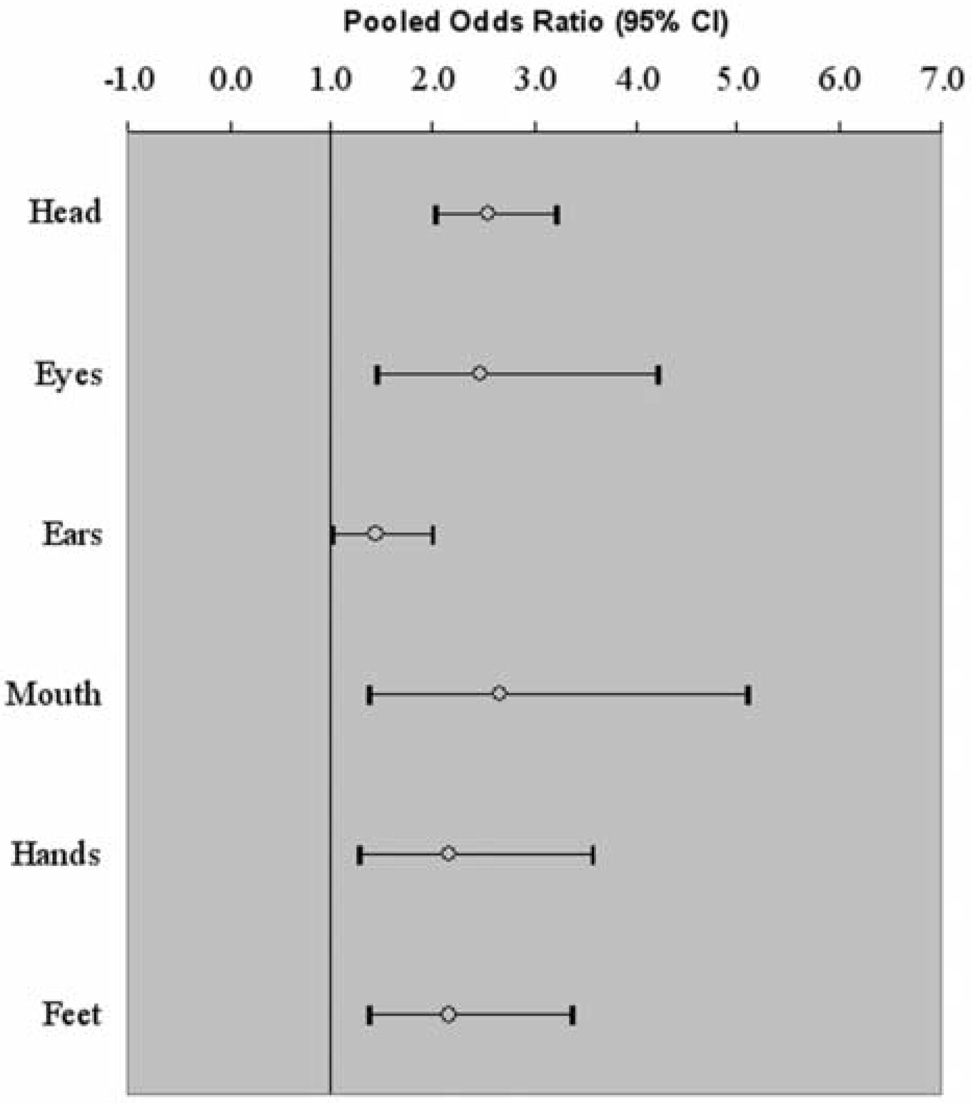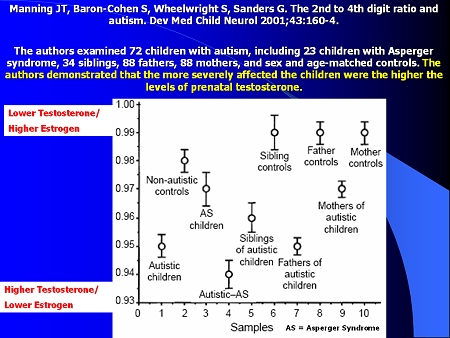None
Most users ever online was 387 on Tue Dec 05, 2023 7:35 pm
The newest registered user is Skylines3
Our users have posted a total of 47502 messages in 4941 subjects
| No user |
• The FREE hand reading services at the Modern Hand Reading Forum are being continued in 2019 with the assistance of Google adsense!

Learn how to read hands according the Modern Hand Reading paradigm & you can use this forum as your palm reading guide!
Behavior problems, minor physical anomalies & the hand!
Modern Hand Reading Forum - Discover the language of your hands: palm reading & palmistry forum! :: III - MODERN HAND READING - Various systems for reading hands! :: IIIa - Modern Palmistry: general topics, questions :: IIIf - (Scientific) Multi-Perspective Palm Reading
 Behavior problems, minor physical anomalies & the hand!
Behavior problems, minor physical anomalies & the hand!

The relationship between hands & behavior had already been notice in the early days of the Greek philosopher Aristotle (384 BC – 322 BC) - who e.g. debated the cause-and-effect relationship in the hand’s development and the emergence of the superior human intellect. Later the Roman physician Galen (129 – 199) became known for advocating the view that physical features could reflect inner characteristics of behavior. And more later the concept of the ’physiognomy’ suggested that deviant behavior could be predicted from certain physical characteristics of the head and hands.
During the 2nd half of the 20th century a new development became manifest. The so-called ‘minor physical anomalies’ (MPA’s) became a study object for behavioral & medical researchers in order to study the cause of various behavior-related disorders. And these MPA's are typically found at the body's most differentiated extremities: the hands & face!

Hands, MPA’s & behavior disorders:
In the past few decades MPA’s became associated with etiology studies for a wide range of function & behavior related disorders in newborns & school-age children, such as: autism, Down syndrome, hyperactivity, inhibition, learning disabilities, psychoneurotic behavior, schizophrenia, speach- & language problems.
And especially the ‘Waldrop scale‘ (Waldrop & Halverson, 1971) became a popular tool for studying the prevalence of MPA’s in these populations. And various studies have indicated that the MPA’s included in the ‘Waldrop scale’ are much more often seen in certain groups of youngsters.
While the average prevalence of items is usually low in controls (between 1.10% and 2,32%), studies have reported much higher values in various populations, e.g.: Down syndrome (17.04%), schizophrenia (4.83%), Tourette syndrome (5.45%).
And the results typically show a much higher occurence of multiple MPA’s among the patients than in the control populations.

Hand markers in the Waldrop scale:
Interestingly, various items in the Waldrop scale relate to the hands, including:
1 - simian crease (= fusion of the heart line & head line);
2 - Sydney line (= extended head line);
3 - single flexion crease on the 5th finger;
4 - unusual length of the fingers;
5 - clinodactyly (= usually a bent pinky);
6 - nail hypoplasia (= fingernail thickening, thinning or fragility).
NOTICE: These six MPA's are also included in the Multi-Perspective Palm Reading Vocabulary
But the studies so far have also indicated that the individual items in the Waldrop scale can not serve for reliable diagnosis. And few details are available regarding the possibility that specified combinations of MPA’s (within one body part or multiple body parts) could serve as a reliable diagnostic marker.

Hand Markers & Multi-Perspective Palm Reading
'Multi-Perspective Palm Reading' provides an assessment method (through an analysis of the 7 perspectives of the hand) that not only includes the earlier described MPA's that relate to the hand. This new type of 'scientific' palm reading also introduces more than 100 other hand features that have been described as 'significant makers'
In this new blog-post you can read more about how MPA's relate to the hand ...
http://palmreadingperspectives.wordpress.com/2011/04/27/hands-minor-physical-anomalies-mpas-behavior/
 Re: Behavior problems, minor physical anomalies & the hand!
Re: Behavior problems, minor physical anomalies & the hand!
In the book: 'Schizophrenia' (authors: Steven R. Hirsch, Daniel Roy Weinberger) is an overview presented of result reported by studies which have confirmed that schizophrenia is typically featured with an unusual high rate of MINOR PHYSICAL ANOMALIES - in most studies the percentages are e.g. higher than in order psychiatric disorders, see pages 232-234:
SCHIZOPHRENIA (2003) - Chapter: 'proxy markers of disturbed early development'
The authors e.g. present a summary of hand characteristics that have been associated with schizophrenia.
By the way, two months ago I have presented myself a summary of typical hand characteristics in Schizophrenia (by the way... more details will follow soon), see:
http://www.handresearch.com/diagnostics/schizophrenia-simian-line-palm-reading.htm
One of the markers that I have found in multiple studies (including the studies by the psychologists Charlotte Wolff & Yael Haft-Pomrock) that schizophrenia is often featured with a long, narrow hand.

Now... what have I just discovered?
I have just noticed that the authors of the book 'Schizophrenia', e.g. report that the results of various studies suggest that schizophrenia is typically featured with an 'elonguation' of the face (especially the mid- & lower face), resulting in a longer 'ratio of skull width'.
And in 2005 & 2006 other studies have confirmed this again:
http://ajp.psychiatryonline.org/cgi/content/full/162/3/606
http://www.maths.lth.se/matematiklth/personal/johank/schizo.pdf
E.g. the 2005 study reports:
"The greatest deformation was observed in the sagittal plane as vertical (i.e., superoinferior) elongation of the face in patients relative to comparison subjects."
 Obviously... this suggests a clear 'parallel' been the typical features seen in schizophrenia regarding the hands & the face!
Obviously... this suggests a clear 'parallel' been the typical features seen in schizophrenia regarding the hands & the face!To be continued...!
NOTICE: Anat, who is another member of this forum is currently working on a study of the hand in schizophrenia... I will ask her to report her results at this forum herself.
Finally, the picture below - taken from a 2007 meta study - provides a confirmation that schizophrenia is typically featured with 'minor physical anomalies' which are distributed all over the body:

 Re: Behavior problems, minor physical anomalies & the hand!
Re: Behavior problems, minor physical anomalies & the hand!
... Just spotted a study from Slovakia (2011) which recently presented new evidence that autism (autistic spectrum disorder) correlates with a low 2D:4D digit ration:
http://www.bmj.sk/2011/11207-02.pdf
NOTICE: The illustration below presents an overview of some earlier results summarized by Prof. John Manning; for more details: see Manning's books + the following study:
http://www.autismresearchcentre.com/docs/papers/2002_manning_etal.pdf

 Re: Behavior problems, minor physical anomalies & the hand!
Re: Behavior problems, minor physical anomalies & the hand!
According to data regarding prevalence of MPA's, It was proved that whtever items considered under waldrop scale cannot serve as reliable diganostic markers. You also mentioned, few details are available regarding the possibility that specified combinations of MPA’s could serve as a reliable diagnostic marker. As per physiognomy, deviant behavior could be predicted from certain physical characteristics of the head and hands.
Here, I don't see a sole importance of palmistry in predicting wide range of function and behavior related disorders. Iam not getting the take home message from your post. can you tell me what you are trying to convey ?
FASTTIMEBOY !
FÄSŦŦÌMÉBÖY (ツ)- Posts : 40
Join date : 2010-10-07
 Re: Behavior problems, minor physical anomalies & the hand!
Re: Behavior problems, minor physical anomalies & the hand!
FÄSŦŦÌMÉBÖY (ツ) wrote:Hi, Martijn !
According to data regarding prevalence of MPA's, It was proved that whtever items considered under waldrop scale cannot serve as reliable diganostic markers. You also mentioned, few details are available regarding the possibility that specified combinations of MPA’s could serve as a reliable diagnostic marker. As per physiognomy, deviant behavior could be predicted from certain physical characteristics of the head and hands.
Here, I don't see a sole importance of palmistry in predicting wide range of function and behavior related disorders. Iam not getting the take home message from your post. can you tell me what you are trying to convey ?
FASTTIMEBOY !
Hello Fasttimeboy,
Basically, I have tried to discuss some fundamentals... which actually explain how SPECIFIC COMBINATIONS of hand signs can be used to diagnose a wide range of disorders via the hand.
Sorry, I am not sure that you have read my words carefully, because your words:
"As per physiognomy, deviant behavior could be predicted from certain physical characteristics of the head and hands."
 ... actually perfectly describe the key-element that I had in mind while writing my posts!!
... actually perfectly describe the key-element that I had in mind while writing my posts!! But afterwards, then your 'red words' make me wonder:
Have you already taken a look at the materials (e.g. about 'Multi-Perspective Palm Reading') that I have refered to with links in my previous posts?
(Again Fasttimeboy, your words - specified: the sentence that I quoted above - indicate that you are very close to what I have described... but somehow, it appears that you missed the button which should make you able to turn on the light in your mind permanently about what I have described)
 Similar topics
Similar topics» What Does Broken Life Line Indicate?
» Ulcer in Mouth and Teeth Problems
» Samudrik palmistry sign in hand and Sydney line in right hand and suwon crease in left hand
» Questions about hand and brain connection and how it is reflected in hand reading
Modern Hand Reading Forum - Discover the language of your hands: palm reading & palmistry forum! :: III - MODERN HAND READING - Various systems for reading hands! :: IIIa - Modern Palmistry: general topics, questions :: IIIf - (Scientific) Multi-Perspective Palm Reading






» Teacher square on my Jupiter mount
» Handreading International Conference 2024
» Can anyone read it for me?
» Are there any signs in the hands that you are a twin flame?
» Square on Marriage line
» Cross in mount Jupiter
» clinodactyly: top phalanges bending towards Mercury finger
» Can anybody please read this hand
» Nisha Ghai
» Absolutely non-sense career till now
» Fate Destiny Line -
» VIII - Palmistry books TOP 100 - listed by 'Amazon Sales Rank'!
» Stewart Culin - Palmistry in China and Japan
» Herbert Giles - Palmistry in China